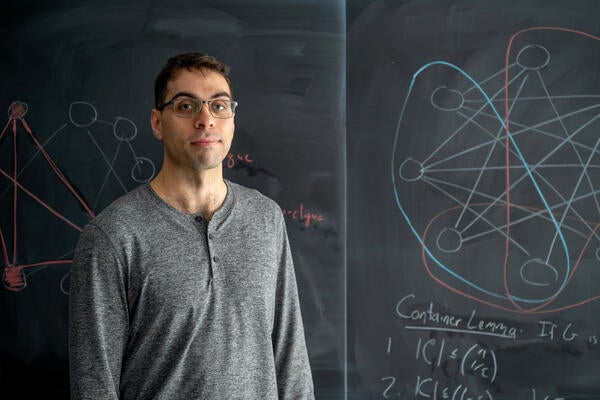
Waterloo research pushes frontier of human-computer interaction
Computer scientists are moving us from tap and touch to gestures when it comes to controlling your smart phone

Computer scientists are moving us from tap and touch to gestures when it comes to controlling your smart phone
By Mirko Petricevic Marketing and Strategic CommunicationsEarly in his career, Edward Lank noticed that people were often impressed with interesting new software developments but wouldn’t embrace them.
“The systems were perhaps clever, but people wouldn’t use them,” says Lank, associate director of the Cheriton School of Computer Science and co-director of the Human Computer Interaction Lab (HCI).
So Lank made it his goal to make a person’s interaction with computers - specifically gesture-based motions - a better experience and he found the best inspiration is a team of students with diverse backgrounds from psychology to engineering and anthropology.

“I find things that capture students’ imagination and let them drive toward it,” says Lank.
Moving from tap and swipe to shuffle
Smartphone users can already perform some tasks through motion gestures instead of using their fingers to tap or swipe their screens. For example, they can shuffle songs on an iPhone simply by shaking it — a gesture dubbed “shake to shuffle.”
Ankit Kamal, a graduate computer science student, wrote an app that measures a person’s progress as he or she tries to learn how to control a smartphone using various motion gestures. The app will tell users how quickly they’re learning the gesture required to turn a page by flicking their smartphone — a gesture that would be handy on winter days when users are wearing gloves.
Valerie Sugarman, also a computer science grad student, is working to help people use their smartphones to dial down the amount of electricity they use when demand spikes — for example, on summer days when air conditioners are running full blast.
Sugarman envisions a time when people might be offered incentives to reduce their power use — perhaps discounts on their electricity bills or coupons for cold drinks at nearby coffee shops.
Other HCI lab projects include:
The research team isn't in the business of developing products for consumers, Lank noted. Rather, they’re doing the initial research that commercial software developers can build upon to make products that people will embrace.
“We’re just earlier in the development path,” Lank said.

Read more
Here are the people and events behind some of this year’s most compelling Waterloo stories

Dr. Chris Bauch, a professor of Applied Mathematics at the University of Waterloo, is part of a team that has developed a new approach to help public health officials predict where outbreaks might occur. (Elisabetta Paiano/University of Waterloo)
Read more
New research demonstrates that vaccine skepticism on social media can predict public health crises

Read more
Waterloo researcher Cameron Seth is breaking down the world’s hardest computer science problem piece by piece
The University of Waterloo acknowledges that much of our work takes place on the traditional territory of the Neutral, Anishinaabeg, and Haudenosaunee peoples. Our main campus is situated on the Haldimand Tract, the land granted to the Six Nations that includes six miles on each side of the Grand River. Our active work toward reconciliation takes place across our campuses through research, learning, teaching, and community building, and is co-ordinated within the Office of Indigenous Relations.